OFFICIAL: Tanabe USA How its Made (Factory Tour)
#1
OFFICIAL: Tanabe USA How its Made (Factory Tour)
Tanabe performance coil springs have an extremely high tensile strength of 2100nm using only cold formed steel. This is the meaning behind the '210' suffix at the end of all Tanabe high performance coil spring lines. Within our manufacturing process lies the secret in the Tanabe spring's strength and extended durability.
Tanabe owns and operates one of the most advanced coil winding machines in the world. In addition to the coil spring machine, Tanabe springs are manufactured using several patent pending processes that cannot be found anywhere in the world!
1-4. COLD WINDING
Coil spring winding is the process where the high tensile steel is wound in the spring coiling machine, and the spring takes it's shape and length. Large rolls of high tensile steel are fed into this machine for the winding process. Using our advanced coil machine, our cold winding process maintains a very low temperature to wind the spring. Most springs are manufactured using an older hot winding technique, which heats the spring to a very high temperature to soften the material and make easier to wind. High heat, even for small amounts of time, unfortunately causes a detrimental side effect of causing the internal molecular structure of the steel to expand, which in turn weakens the overall strength. By maintaining a low temperature during our winding process, the internal structure is kept tightly packed, which maintains the steel's strength. Cold winding is the best process for producing a spring with extremely high tensile strengths. Because cold winding does not expose the material to high temperature, very advanced machinery such as ours is required. Most manufacturers are unable to cold wind their springs because less advaned winding machines would cause the high tensile steel snap if cold winding was attempted.
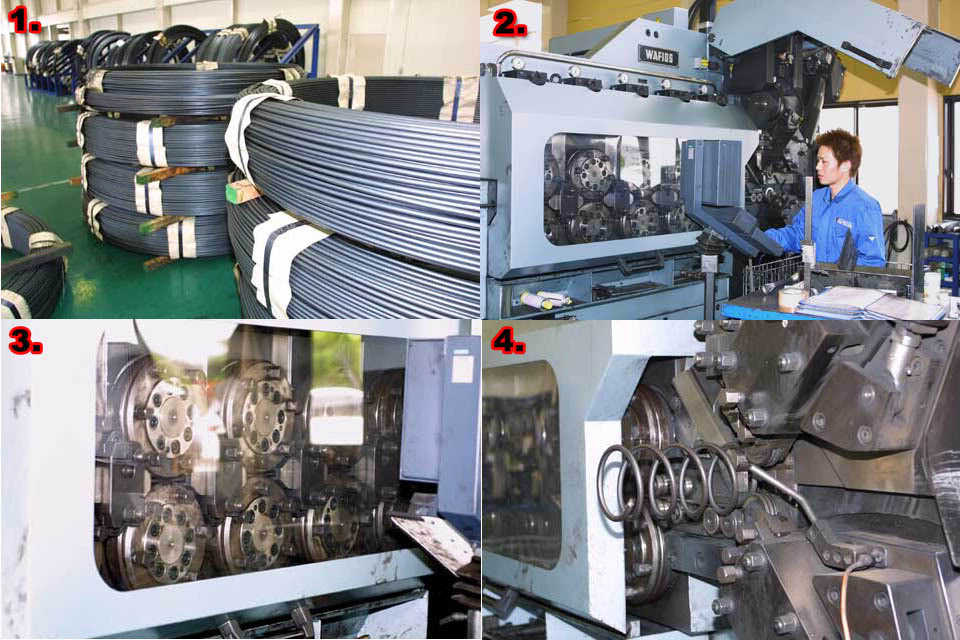
5-8. COLD TEMPERING
Tempering is a process that hardens and further strengthens the steel. Tempering improves the consistency of the internal structure to eliminate the possibility of weak spots within the spring. The coil springs are processed through this machine, which keeps them at a specific, constant low temperature for an exact amount of time. This process is monitored closely to ensure that temperatures do not vary so all remaining internal resistance at the molecular level is removed, and the spring increases its strength.
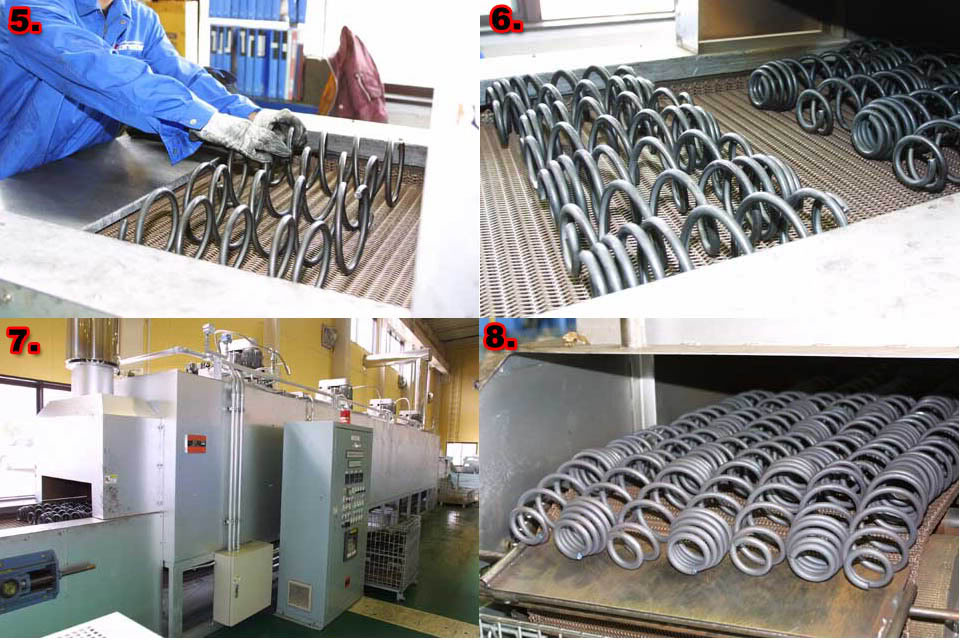
9-10. TRUE INDIVIDUAL SHOT PEENING
Shot peening is a process that shoots various size steel ball bearings against a surface, to cause beneficial unevenness of the surface, which improves tensile strength. Older shot peening processes perform this on one large batch of springs, which greatly reduces actual coverage. This machine is unique in that the coil springs are processed individually to ensure maximum and even coverage during the shot peen process. The coil spring is run through two unique shot peen processes, which is part of the confidential formula for Tanabe's 2100nm of tensile strength. This patent pending process for true individual double shot peening is unique to the Tanabe Shiga factory.
11. HUMID GRINDING
For the PRO210 adjustable coilover springs, the top and bottom edges are humid grinded flat, for fitment onto the seats and spring perches. Conventional grinding methods cause excessive friction, which causes high temperatures which dissipate throughout the spring, reducing overall strength due to heat expansion. The Humid Grinding machine is very advanced in that it does not produce excessive heat during the grinding process.
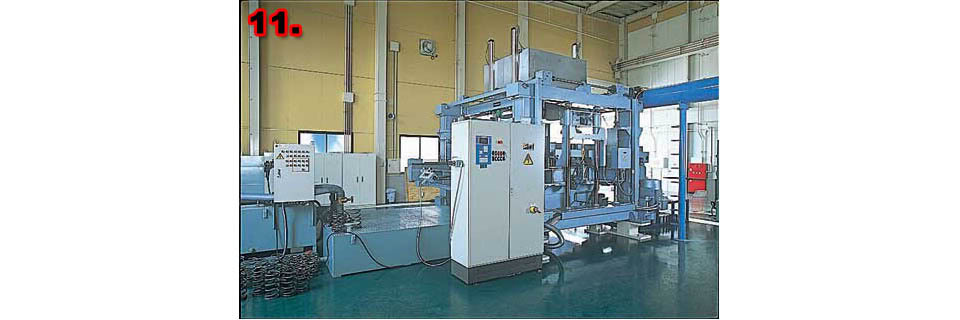
12. 100% LOADING
Loading of the spring is part of the final testing process after production. Loading the spring compresses the spring to measure the strength and ensures tolerances within the spring's structure. Conventional loading processes load it to a maximum of only 50-70%, which causes a possibility of sagging and deformity. Using this machine, the spring is compressed 100% to determine that each spring has full function, and will never deform. By loading the spring to the full 100%, the spring is pre-engineered and tested to never sag.
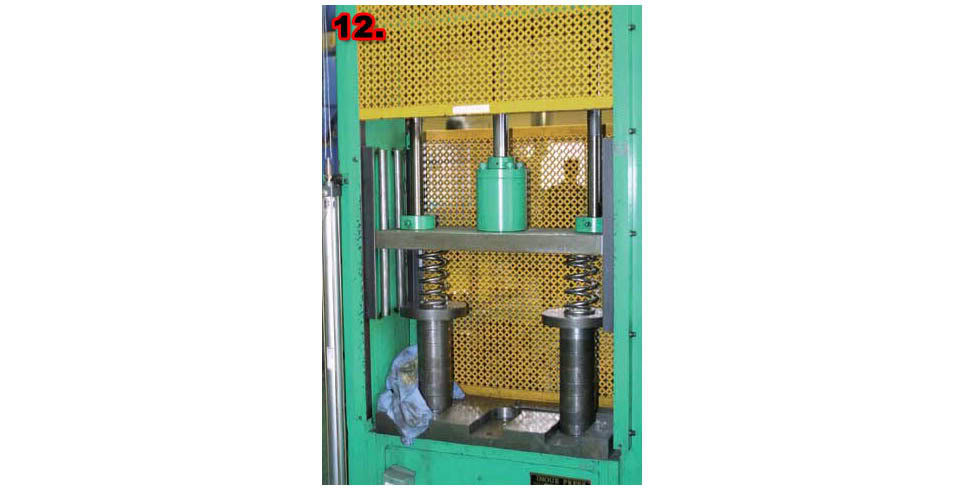
13-14. MEASUREMENT AND TESTING
Each specification for the spring is measured and tested after production, to ensure the spring rates and lengths are even and consistent, which ensures perfect fitment, function, and quality for all springs. The extra steps for quality assurance is part of why Tanabe has the world quality manufacturing certification, ISO9001.
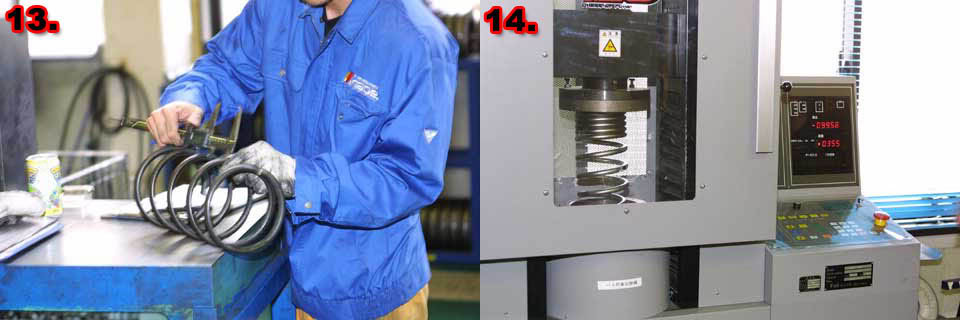
POWDER COAT
After production and numerous inspection testing, the springs are finally sent for powdercoating and logos.
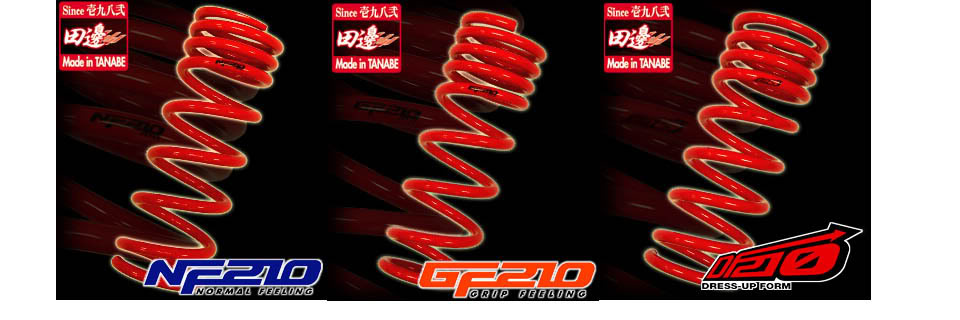
Tanabe owns and operates one of the most advanced coil winding machines in the world. In addition to the coil spring machine, Tanabe springs are manufactured using several patent pending processes that cannot be found anywhere in the world!
1-4. COLD WINDING
Coil spring winding is the process where the high tensile steel is wound in the spring coiling machine, and the spring takes it's shape and length. Large rolls of high tensile steel are fed into this machine for the winding process. Using our advanced coil machine, our cold winding process maintains a very low temperature to wind the spring. Most springs are manufactured using an older hot winding technique, which heats the spring to a very high temperature to soften the material and make easier to wind. High heat, even for small amounts of time, unfortunately causes a detrimental side effect of causing the internal molecular structure of the steel to expand, which in turn weakens the overall strength. By maintaining a low temperature during our winding process, the internal structure is kept tightly packed, which maintains the steel's strength. Cold winding is the best process for producing a spring with extremely high tensile strengths. Because cold winding does not expose the material to high temperature, very advanced machinery such as ours is required. Most manufacturers are unable to cold wind their springs because less advaned winding machines would cause the high tensile steel snap if cold winding was attempted.

5-8. COLD TEMPERING
Tempering is a process that hardens and further strengthens the steel. Tempering improves the consistency of the internal structure to eliminate the possibility of weak spots within the spring. The coil springs are processed through this machine, which keeps them at a specific, constant low temperature for an exact amount of time. This process is monitored closely to ensure that temperatures do not vary so all remaining internal resistance at the molecular level is removed, and the spring increases its strength.

9-10. TRUE INDIVIDUAL SHOT PEENING
Shot peening is a process that shoots various size steel ball bearings against a surface, to cause beneficial unevenness of the surface, which improves tensile strength. Older shot peening processes perform this on one large batch of springs, which greatly reduces actual coverage. This machine is unique in that the coil springs are processed individually to ensure maximum and even coverage during the shot peen process. The coil spring is run through two unique shot peen processes, which is part of the confidential formula for Tanabe's 2100nm of tensile strength. This patent pending process for true individual double shot peening is unique to the Tanabe Shiga factory.

11. HUMID GRINDING
For the PRO210 adjustable coilover springs, the top and bottom edges are humid grinded flat, for fitment onto the seats and spring perches. Conventional grinding methods cause excessive friction, which causes high temperatures which dissipate throughout the spring, reducing overall strength due to heat expansion. The Humid Grinding machine is very advanced in that it does not produce excessive heat during the grinding process.

12. 100% LOADING
Loading of the spring is part of the final testing process after production. Loading the spring compresses the spring to measure the strength and ensures tolerances within the spring's structure. Conventional loading processes load it to a maximum of only 50-70%, which causes a possibility of sagging and deformity. Using this machine, the spring is compressed 100% to determine that each spring has full function, and will never deform. By loading the spring to the full 100%, the spring is pre-engineered and tested to never sag.

13-14. MEASUREMENT AND TESTING
Each specification for the spring is measured and tested after production, to ensure the spring rates and lengths are even and consistent, which ensures perfect fitment, function, and quality for all springs. The extra steps for quality assurance is part of why Tanabe has the world quality manufacturing certification, ISO9001.

POWDER COAT
After production and numerous inspection testing, the springs are finally sent for powdercoating and logos.

#6
awww......this brings back memories for me. used to work for a spring manufacturer in Orange County. We did it the "old" way where we hot coiled then oil hardened. Back then we did the springs for Eibach and swift, i believe. We are talking 13 yeas ago 
nice read!

nice read!
Thread
Thread Starter
Forum
Replies
Last Post
Honda4Life15
3rd Generation GK Specific Suspension & Brakes Sub-Forum
4
03-02-2016 07:27 PM
MugenAP2
Gauge Interest in a Fit Product or Group Buy
5
11-21-2008 07:02 PM
Invision Fit
FIT Vendor General Discussion Area
18
05-27-2008 02:42 PM







